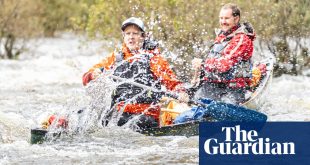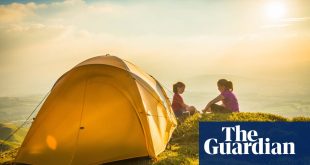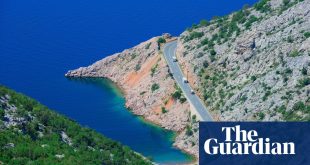How best to rejuvenate? Many opt for doing less: loafing, lounging, luxuriating. The problem with this is that modern life is lived mostly in the mind. Even if you don’t have a job that requires control of an inbox, the exhausting PR project of modern social interaction is inescapable. If you simply stop working, the same processes still whir on, even if in the background. By contrast, actively doing something entirely different, something requiring energy and devotion, draws voltage away from tired wires, lets them cool. That’s why I chose to do the GR20, the path that travels the length of Corsica. People call it the hardest trek in Europe, and that’s what I wanted: to descend from brain into body and restore myself through physical effort.
On the map, the challenge didn’t seem too daunting. I simply needed to take a bag containing a tent and little else to Calenzana in the north of the island, walk 15km or so every day, and end up in Conca in the south roughly 12 days later.
But I quickly realised the GR20’s reputation was well-deserved. The centre of Corsica has little in the way of civilisation: the harsh, high rock forbids it. Between the start and finish I came through one village with one restaurant (closed on Sundays), saw two card readers, and no ATMs. For food and shelter, I relied entirely on the refuges, all basic in every sense, and ranging from charming to openly hostile. (One even proudly hung an IRA flag as part of an anti-colonialist display. I think it was mere coincidence that I got food poisoning there.) The September weather was similarly feral, with bitter mornings and nights bookending hot days, high winds and the odd hailstorm.
Then there were the climbs: the GR20 has 12,000 metres of ascent. The mountains in the north are savage igneous explosions that thrust into the sky. Greenery is scant, just spiky maquis, and the odd solemn tree. Each day I looked at the range in front of me, doubting whether it was passable. There seemed no way up the face, across the boulders, along the ravine. But the little painted flashes, the red and white balisages, showed the way. Someone had been here before and, with faith and fortitude, I could follow them.

In such terrain, on paths found rather than laid, every move demands focus. Zigzag scrambles up jagged pink and grey cliffs were a daily challenge of basic bodily physics, of balance, grip and leverage. Even the flatter bits, covered in loose rock that gets slippery in rain, needed care. Nearing the end of one day, when my mind travelled to dinner, I slipped and bloodied my knee. Many end with worse than the scar I took home.
The imperative of presence sharpens the senses, and enriches rewards. I stood at the top of passes and saw – really saw – everything: the orange beaks of Corsican choughs chattering in the clouds; skies daubed in amber and pink; secret valleys that once hid communists and bandits from the Genovese, the Papists, the French. When you are in that state, time acts strangely. As every second is truly felt, the days stretch out. When finally I staggered into Conca and ordered a cold beer, it seemed I had been up in those mountains, away from normal life, for months. And when I returned taut, tanned and smiling, people looked at me as if I really had.
 Top Naija News: Nigerian News, Breaking News Nigeria and World News Top Naija News is a daily news publication in Nigeria, delivering the latest breaking news in Nigeria and around the world.
Top Naija News: Nigerian News, Breaking News Nigeria and World News Top Naija News is a daily news publication in Nigeria, delivering the latest breaking news in Nigeria and around the world.



